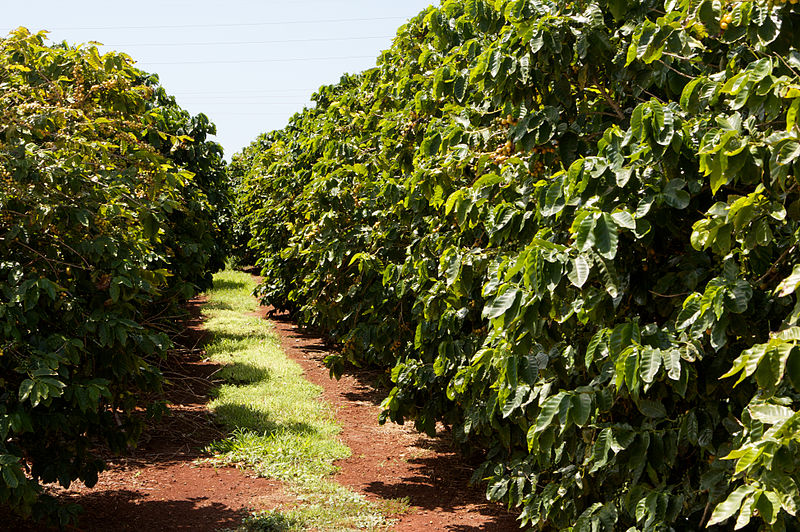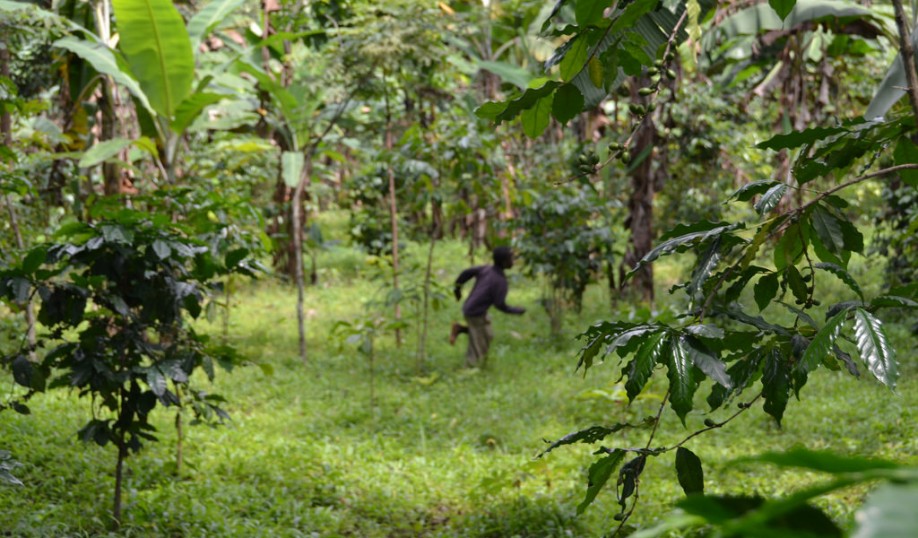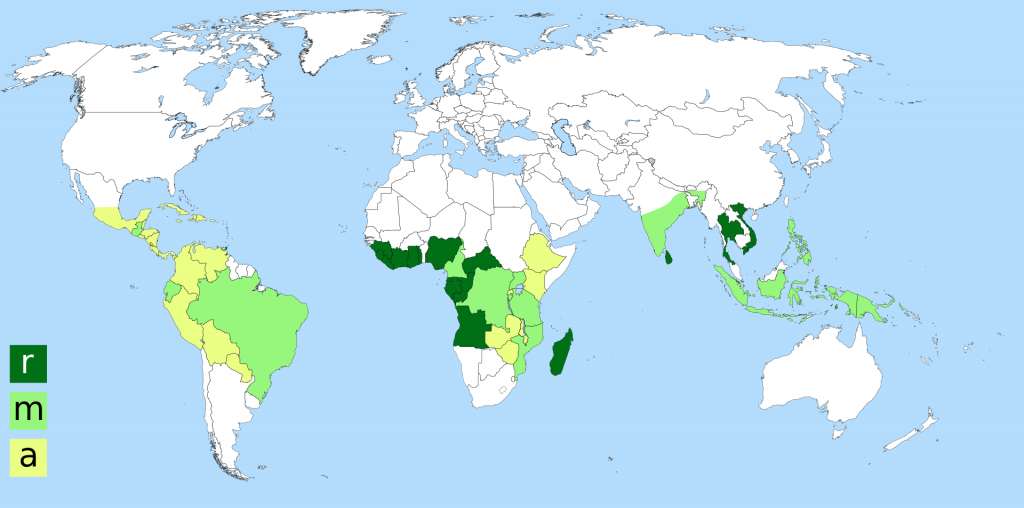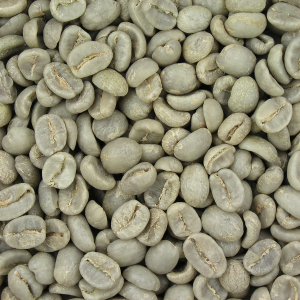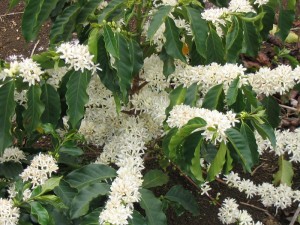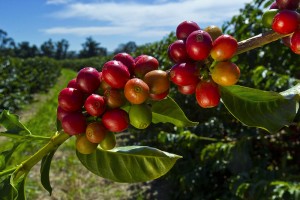Photo: Coffee plantation, Kauaʻi, Hawaii (Wikimedia)
Coffee trees must be grown at certain elevations, with Robusta typically at 800m and below and Arabica at higher elevations, in certain countries up to over 2,000m. The best coffee is grown in deep, well-draining sandy loam or volcanic red earth with a slightly acidic pH of 5.3-6.0. Heavy clay, loam, or sand is unsuitable because of poor aeration, or because the soil will dry rapidly. Erosion can also be an issue. (Assefa et al.; Bullough)
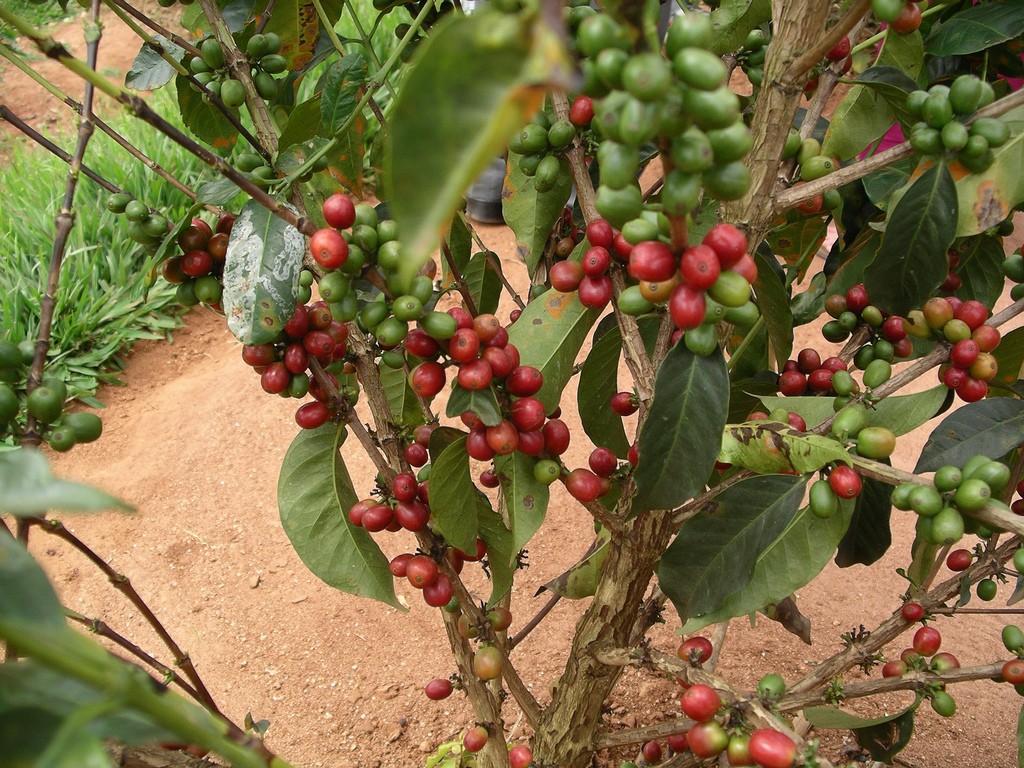
Coffee tree in Rwanda by Colleen Taugher
Much of the world’s coffee is grown in areas where tectonic activity has formed mountains and mountain ranges or chains, including the extinct Mount Kenya in Africa, the active Apaneca-Ilamatepec range in El Salvador, the Andes in South America, and even the islands of Hawaii. (Hoffmann) Along with the tropical climates and high altitudes coffee needs to grow, these mountains provide fertile, nutrient rich soils the coffee trees can thrive in called Andisols. Formed in volcanic ash, these soils can include elements such as phosphorus, nitrogen, potassium, calcium, zinc and boron which are all used by the plant to help it produce coffee. (Bullough)
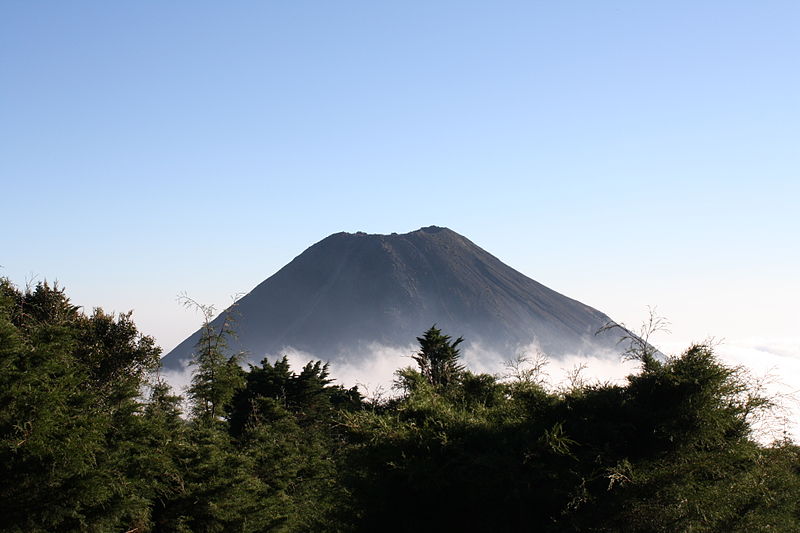
Izalco, an active volcano located in Western El Salvador. by Angela Rucker, USAID
Even though coffee trees are growing in young, fertile volcanic soils, intense coffee production continues to deplete nutrients, leading certain farmers to use chemical fertilizers as well as herbicides and pesticides. Many of these are not only bad for the environment but may also further deplete soils of what the trees really need. (Cerdán et al.) Another issue faced by farmers is the danger of the proximity of farms to active volcanoes – a huge risk in order to grow in some of the best suited soils for achieving great coffee quality. (Hoffmann)

